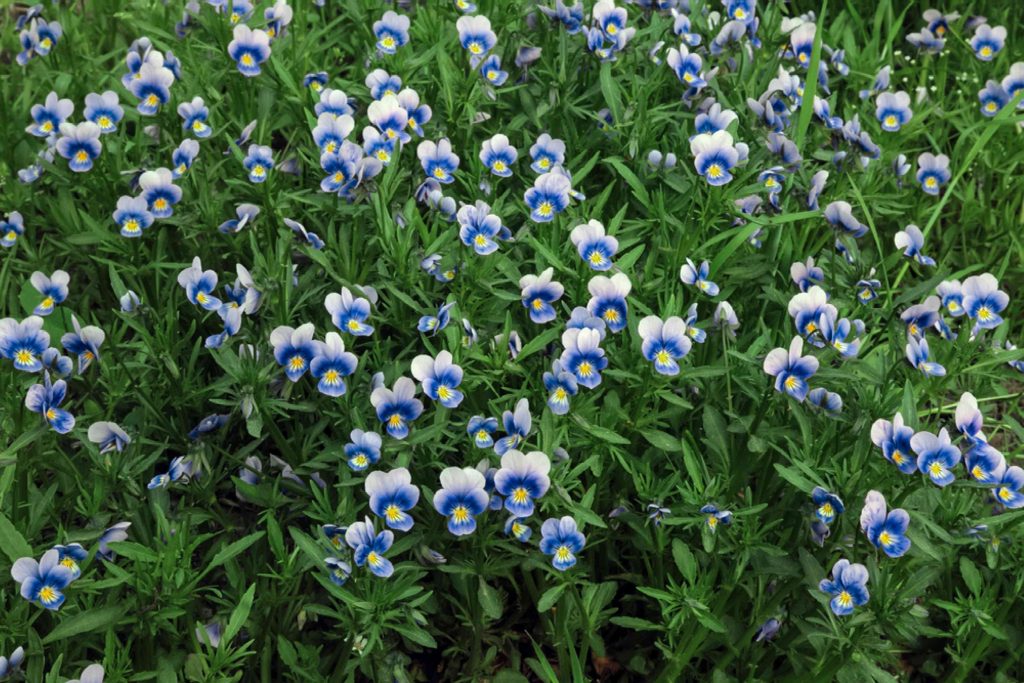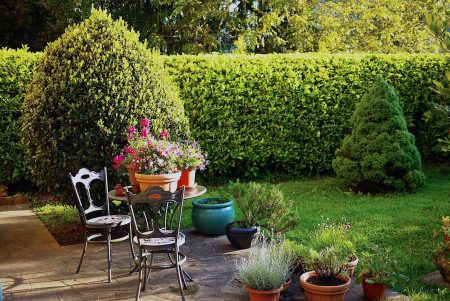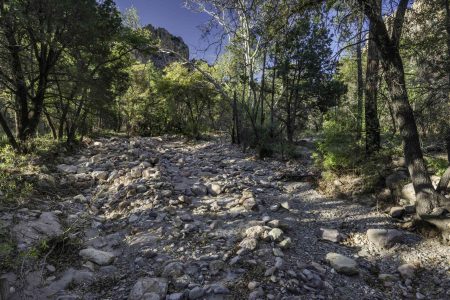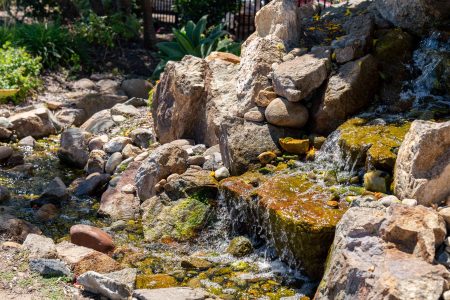Just as your home needs spring cleaning after being shuttered up all winter, so do lawns and gardens. Some TLC in the spring prepares your yard for the growing season. A spring yard cleanup checklist can be divided into six categories that are critical for getting your yard ready for gardening and saving some headaches down the road.
- Removing refuse (natural or otherwise) from your grass and planting beds
- Preparing flower beds
- Planting
- Pest and weed control
- Pruning shrubs
- Addressing mulch removal and perennial division
Removing Refuse
In this first category of spring yard cleanup tasks, you will be picking up after Old Man Winter and any messy neighbors you may have to put up with. Roll up your sleeves and start removing:
- Litter and dog feces
- Dead grass, leaves, pinecones, and debris on lawns
- Dead leaves and stalks on perennials
Wear some heavy work gloves for this task, especially litter that may contain broken glass. Tackle the unpleasant task of dog waste disposal. Consider taking action to help keep other people’s dogs from defecating on your property by researching dog repellents. Don’t compost dog or cat feces; they contain pathogens.
Next is lawn care. If you raked leaves thoroughly in the fall, you’ve probably avoided the fungal disease known as snow mold. But, inevitably, there will still be some stray leaves to rake and raking helps control thatch build-up on lawns. While you’re raking the lawn, you’ll also want to remove pinecones or limbs. Pinecones don’t break down easily in a compost bin unless they are first shredded.
Spring cleanup in the perennial bed begins with removing any dead leaves and stalks from perennials and ornamental grasses that you didn’t remove in fall. Scissors often work better than pruners for this task to get into tight spaces.
Preparing Planting Beds and Fertilizing
In established perennial beds that performed well last season, work in some additional compost around your plants to fertilize them and make the soil more friable. Remove weed plants as you encounter them and any dead growth you didn’t remove in the fall.
Most of your plants, including the grass in your lawn and your trees and shrubs, will enjoy a feeding of compost in the spring. The great thing about using compost as a fertilizer is that you never have to worry about burning plants with it. Compost is nature’s slow-release fertilizer.
If you must use chemical fertilizers, always be careful to follow the application directions to prevent burning the plants. The one chemical fertilizer that is convenient for the lawn is a “weed and feed” type that contains a preemergent herbicide to prevent crabgrass.
To open up brand new planting beds, you can
- Use a tiller to break new ground
- Kill grass using a smothering method or soil solarization to convert lawn space into a planting bed
- Build raised beds
- Make landscaping berms
If you’ve just opened up a planting bed by breaking new ground, you can be sure that weeds will find it quickly. Consider laying landscape fabric over the ground and covering it with a layer of mulch to protect the landscape fabric from harmful UV rays. If you don’t like landscape fabric in vegetable planting beds, go with mulching like straw. But in a shrub planting bed, these weed barriers are a great ally in helping you achieve a low-maintenance yard.
Planting Flower Beds and Lawns
Early spring is a good time to install trees and shrubs and to plant perennial flower borders, as long as they’re hardy perennials. For annuals and tender perennials, wait till the last frost date has passed for your region.
In the Northern United States, you can start new lawns in spring or overseed an established lawn However, if you will be applying a preemergent herbicide in spring to control crabgrass in an existing lawn, it is better to overseed in the fall.
Pest and Weed Control
Sometimes it’s easier to fight weeds before they even emerge, rather than waiting until they rear their ugly heads. Landscape fabric and mulch work well in garden beds, but you can’t use either on a lawn. That’s where preemergent herbicides come into play, particularly for crabgrass control.
Spring is the time to use a preemergent herbicide on crabgrass, and timing is of the essence. Crabgrass seed germinates when the soil temperature reaches 55 to 60 degrees F. You need to apply the preemergent herbicide before this time.
Pests pose another challenge that can best be addressed by taking preventive measures. Gardens often need to be protected from rabbits. In regions plagued by deer, deer fencing is one option, but it’s smarter simply to use deer-resistant plants unless restricting your plant selection in this way offends your sense of gardening freedom.
Ticks are another pest of concern not to plants but to you. Spray for deer ticks in late spring to reduce your chances of being bitten.
Pruning Shrubs
Now that winter’s over, it’s time to remove any shrub shelters protecting your bushes and size up their pruning needs. Address old, dead wood, or wood recently damaged by winterkill and aesthetics
Dead limbs and winterkill on branches should be pruned off. This is the easy part of pruning: Remember, you can’t go wrong pruning off something already dead. The key is determining where the brown ends and the green begins.
The best time to prune off healthy wood on shrubs is a different question because you can go wrong with your timing. And while dead branches should always be removed, the necessity of pruning off live branches is often determined by one’s eye for beauty to give it a more pleasing shape.
The best time to prune flowering shrubs, in particular, is the one that instills fear in gardeners every spring since improper pruning will result in the loss of the blossoming displays. To simplify, think of it this way:
- Shrubs that bloom in spring have to have their buds already in place on last year’s growth so that they’re ready to kick into action when the warm weather comes. If you prune these branches off, you lose the flowers. Wait to prune such shrubs until after they have finished blooming. Examples are Forsythia. Korean spice viburnum (Viburnum carlesii), and Lilacs (Syringa vulgaris)
- Shrubs that bloom later in the year bloom on new growth produced in the current season. You can go ahead and prune such shrubs in late winter or early spring if you wish, without fear of losing flowers. Examples are Butterfly bush (Buddleia davidii), Rose of Sharon (Hibiscus syriacus), Lavender (Lavandula), Bluebeard (Caryopteris), and Beautyberry (Callicarpa).
Mulch Removal and Perennial Division
Monitor the reemergence of the perennials to determine when to pull the mulch away so that the perennials can come through unhindered. An exact date cannot be provided for when to remove this mulch: you must play it by ear depending on where you live.
If you’ve applied a deep layer of mulch, it will eventually need to be scraped away from your perennials or it may smother them. When perennials are pushing up, remove the mulch when it’s warm out but replace it when the cold returns or until the cold stops returning altogether. When warmer weather comes back for good, apply fresh mulch to suppress weeds and conserve water throughout the summer.
Finally, some perennials can profit at times from being divided. Many perennials can be divided in spring but check with your local extension service if you have questions.
Read the full article here









